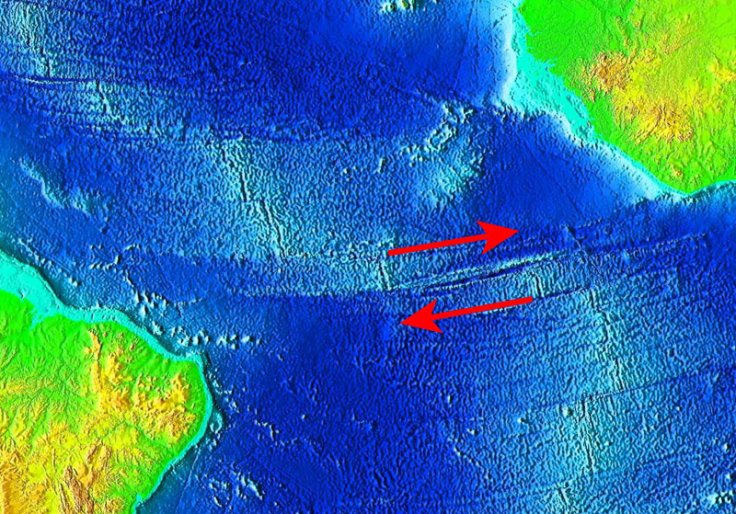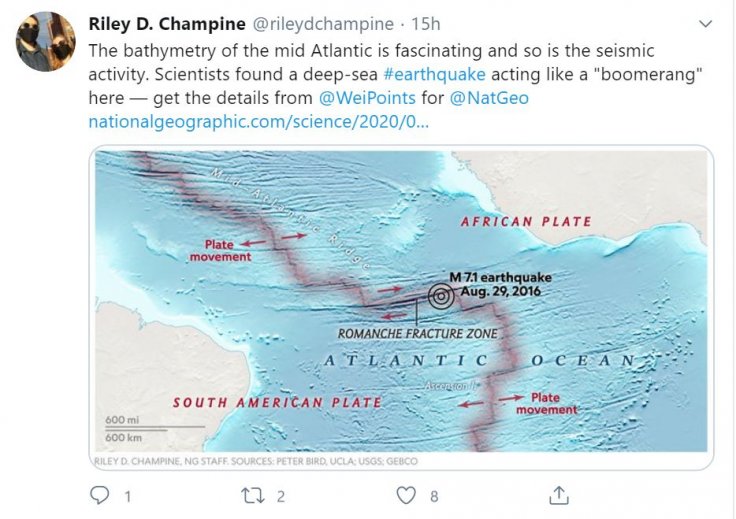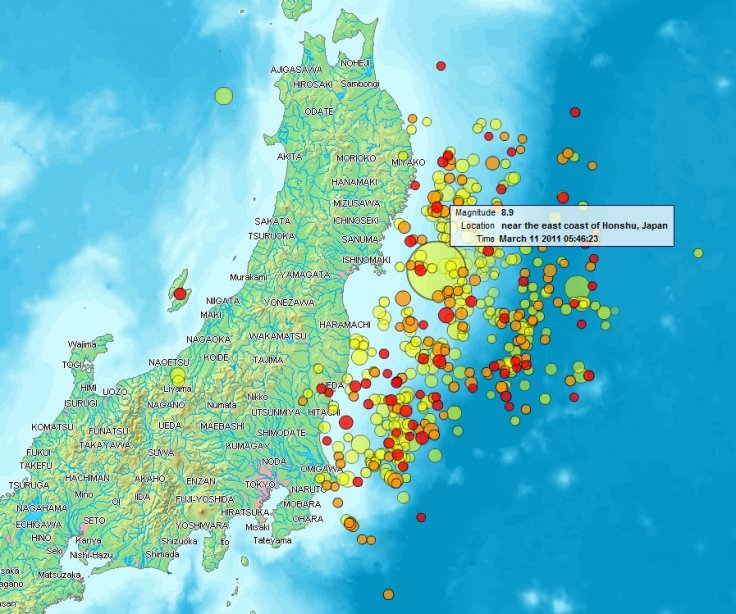Earthquakes generally move in a straight-line pattern and the trail of destruction is visible. While there are aftershocks that often revisit the same location, a bigger-magnitude earthquake never occurs at the same place where it originated. But scientists now believe it can.
After the first phenomenon was observed in 2012, scientists were skeptical about its possibility. The seismic detectors too could not identify the earthquake. Thus, they started conducting a study to find out if it was possible and the results have confirmed its existence.
Boomerang Quake
In the new study, scientists discovered evidence of a 'boomerang-shaped earthquake' that occurred in 2016 below the seabed of the Atlantic Ocean. The earthquake created a "back-propagating supershear rupture" along the Romanche fracture zone near the equator. It is between the west coast of Africa and Brazil.

The fracture zone is a fault line of around 900 kilometers between the African and South American tectonic plates near the Mid-Atlantic Ridge. As scientists placed seismometers on the sea bed of the region, they could record a 7.1 magnitude of the quake. But upon analyzing the quake further, scientists realized it was no ordinary tremor. The earthquake went in a straight line before coming for more with a significant increase in speed.
"Whilst scientists have found that such a reversing rupture mechanism is possible from theoretical models, our new study provides some of the clearest evidence for this enigmatic mechanism occurring in a real fault," said Dr Stephen Hicks, who was the lead researcher and seismologist from Imperial College London.
Analysis of the seismic data revealed two different stages of the quake. In the first phase, the crack appeared upward and eastward towards a weak spot where fracture zones meet. But then, it turned around in an unusual "back-propagation westwards" with a supersonic speed (up to six kilometers or 3.7 miles per second).
"Even though the fault structure seems simple, the way the earthquake grew was not, and this was completely opposite to how we expected the earthquake to look before we started to analyze the data," Hicks said.

Reasons Remain Unknown
However, despite analyzing the data, Hicks and his team could not come to a concrete conclusion. The reason remains speculative for now. They believe the quake released enormous energy that began the reversal in the shallower terrain.
"Either both fault patches were sufficiently pre-seismically stressed to promote seismogenic failure or the deeper SE1 rupture instantaneously increased the static stress, immediately causing the shallow SE2 portion of the fault to fail," the study said.
While there is no observational evidence to suggest if it could also occur on land, the research team believes if such a phenomenon ever takes place, it will be devastating as the seismic rupture would dramatically affect the number of tremors and intensity.

But scientists believe that the magnitude 9.0 earthquake that hit Tohoku, Japan in 2011 might be of a similar nature. It was the most powerful earthquake ever recorded in the country's history. Even the Kumamoto earthquake could also have traces of boomerang effect as the initial tremor triggered two other quakes and one of them turned back to overlap with the initial rupture, National Geographic reported.
"Naturally we're not looking for it, we don't expect it to exist. Yet for earthquakes, it seems, complexities might be the norm rather than the exception," said seismologist Jean-Paul Ampuero of the Université Côte d'Azur, France.









